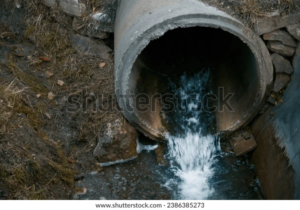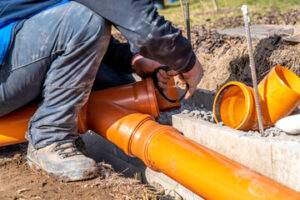Businesses that generate hazardous and non-hazardous liquid waste must dispose of it responsibly. It involves separating the waste from water, storing it in safe containers, and transporting it to a designated facility for treatment.
Poor disposal techniques can cause serious environmental concerns and harm local communities. They can also pollute water sources and damage marine ecosystems. Contact Liquid Waste Removal Perth now!

Liquid waste generated by workplaces in the oil and gas, food processing, and manufacturing industries requires expert handling to prevent environmental contamination. Incorrect disposal methods can have both short—and long-term effects on the environment, which is why it’s essential that businesses understand how to dispose of liquid waste safely.
The first step in removing liquid waste involves dewatering, a process that separates solids from the water. The resulting residue can be recycled or sent to landfills for disposal. There are several different dewatering techniques, but the most common is to use a plate and frame or belt filter press to force the solids out of the water. Other methods are also available, such as centrifuging, screw presses and geomembranes.
After dewatering, the sludge may require further treatment to remove contaminants such as organic matter and heavy metals. This can be done by mineral chemicals (e.g. iron salts and lime) or organic chemicals (e.g. coagulants and flocculants). Once the sludge is fully treated, it can be thickened using a variety of technologies including a gravity belt, a thickening drum/screw drum or a centrifuge.
Some liquid wastes don’t need to be treated at all and can be disposed of directly into deep wells, industrial and municipal wastewater systems or saltwater disposal wells. Other wastes may need further treatment to reduce their Biochemical Oxygen Demand (BOD) and Total Suspended Solids (TSS) levels before they can be discharged into a regulated water body.
Liquid wastes that are too dirty to recycle can be diluted and spread over agricultural land, or used as a nutrient for soil. Other options include ocean dumping, which is typically done under stringent environmental conditions and with strict monitoring.
Other options for removing non-hazardous liquid waste include sedimentation, composting and incineration. This is a great option for businesses that produce large volumes of liquid waste, especially those in the food and beverage industry. Depending on the type of waste and the level of hazard, these methods can be much cheaper than transporting and disposing of liquid waste to landfills.
Sedimentation
Sedimentation is a simple, inexpensive and environmentally friendly process that separates solid particles from liquid waste. It involves the separation of a solid phase from a fluid phase, using the forces of gravity and electromagnetism. It is especially effective for separating oils and water from other substances. Sedimentation is also used in medical diagnostics to detect a variety of diseases, and it is important for water treatment plants.
The sedimentation process consists of two phases: the solid phase, known as the sediment, and the liquid phase, known as the wastewater. The sediment phase can be separated from the wastewater by a physical separation process or a chemical process. The sediment can then be removed from the wastewater and disposed of in an approved manner. Sedimentation is a popular option for wastewater treatment because it can be used in conjunction with other water treatment processes.
There are many types of sedimentation processes. One type is called unhindered settling, which removes discrete particles without interference from other particles. This type of sedimentation is the most common method for removing solids from liquid waste. Another method is hindered settling, which uses a physical separation device to help the particles settle more quickly.
Generally, sedimentation is preceded by a chemical coagulation process. The purpose of this is to allow the coagulated particles to clump together into flocs that are larger in size. This increases the settling speed and allows the flocs to be more easily filtered out.
After sedimentation, the liquid waste goes through several filtration processes to reduce the concentration of solid particles. This is done to ensure that the liquid waste meets sanitary standards before it is discharged into the environment. This process is extremely important for human health and environmental protection, and it is highly regulated by government agencies.
When choosing a company to handle your liquid waste disposal, make sure the company follows industry best practices and stays up-to-date on current regulations. You should also look for a company that has licenses and certifications, as well as a commitment to environmental stewardship.
Recycling
The recycling process involves taking an item and changing it, usually through a manufacturing process, to create new materials and items. For example, aluminum cans are recycled into new aluminum products while paper is turned into toilet paper and other types of paper. The goal is to reduce waste and conserve natural resources. Recycling also helps to reduce green house gases that contribute to climate change and saves energy. Additionally, it creates jobs and helps to supply valuable raw materials to industry.
Liquid waste includes many different substances, from chemicals and sewage to grease and oil. Some of these substances may be dangerous to humans and animals, so it is important to dispose of them properly. Fortunately, there are a number of different ways to do this. Liquid waste disposal is accomplished through a variety of processes, including dewatering, sedimentation, and incineration. In addition, it is possible to reuse or recycle liquid waste by converting it into useful materials.
Storage areas for liquid waste can include barrels, lagoons, or tanks. These storage areas are used to collect and contain liquid waste until it can be processed for proper disposal. This prevents the waste from leaking or spilling, which can pollute waterways and damage the environment. It is important to choose a reputable waste management company with experience and expertise in liquid waste removal and treatment.
When selecting a liquid waste disposal service, it is important to consider their licenses and certifications as well as their environmental commitment. A good company will be committed to preserving the environment and will have partnerships or affiliations with environmental organizations. They will also be knowledgeable about the latest industry regulations and be able to guide businesses through them.
It is also important to understand that different types of liquid waste require different methods for disposal. For example, industrial sewage is much more toxic than household sewage and can contain harmful metals. As a result, it requires more rigorous disposal techniques than household sewage. Additionally, some liquid waste can be contaminated with bacteria that are resistant to certain treatments. In these cases, advanced treatments such as UV radiation and reverse osmosis are required to treat the liquid waste effectively.
Incineration
Many countries have stringent regulations regarding the proper disposal of liquid waste. Failure to follow these rules can result in fines and legal penalties. In addition, improper disposal of liquid waste can harm the environment and threaten public health. Professional liquid waste removal companies play a crucial role in ensuring responsible waste management.
Incineration Liquid Waste Removal Practices
This method involves combusting the waste at high temperatures, which reduces its volume and destroys harmful pathogens. The resulting fly ash and gases can be recycled into energy sources. It is one of the most environmentally friendly liquid waste removal methods. However, it is important to note that incineration does produce air pollutants and carbon dioxide.
Other methods for liquid waste removal include treatment and recycling, and septic systems. The latter is commonly used in areas with limited access to sewer systems. However, septic systems are subject to contamination problems and require regular maintenance. It is also important to know that septic system waste may leak into waterways and agricultural fields, causing damage to the surrounding ecosystem.
Another option is to transport the liquid waste to a landfill, which can be an effective long-term storage solution. However, landfills are often located in sensitive environments, and there is a risk of land contamination. In addition, the transporting of large quantities of waste can be very costly.
Solidification is another method for liquid waste removal, which involves mixing the waste with asphalt or plastic to encapsulate it. This is an effective way to prevent the contamination of nearby soil and waterways. It is also a cost-effective option, as it avoids transportation costs and the need for landfill space. Solidification requires specialized equipment, and it is not suitable for all types of liquid waste.
When choosing a company for liquid waste removal, make sure they are licensed and certified by the appropriate government agencies. Look for certifications and partnerships with environmental organizations to ensure that the company is committed to responsible waste management. It is also helpful to read customer reviews and testimonials to gauge the quality of a company’s service.
